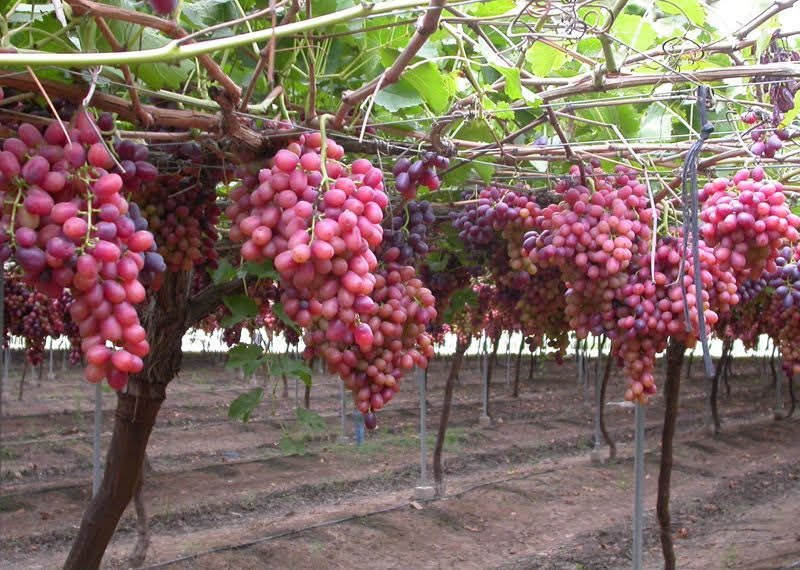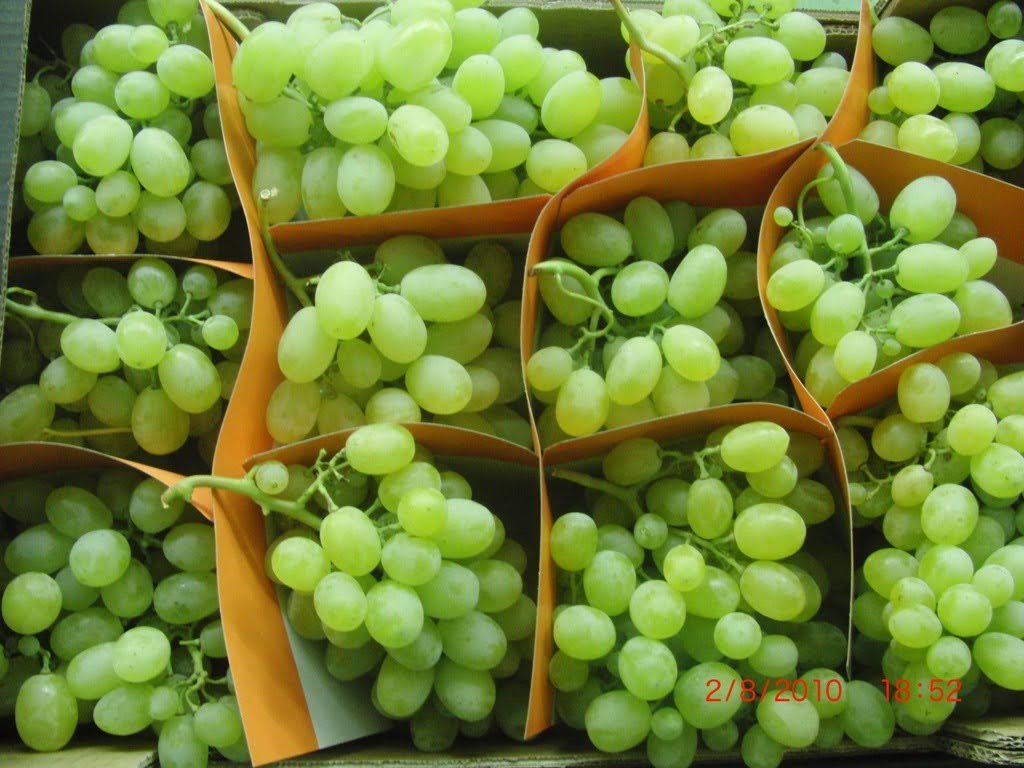From rustic Mediterranean vineyards to the chilled aisles of UK supermarkets, grapes remain one of Europe’s most in-demand fruits. With both seedless and seeded varieties playing key roles, the market reflects a beautiful balance between traditional taste and modern consumer trends.
Most Requested Grape Varieties in the UK & EU
Seedless White Varieties
Sugraone (Superior Seedless)
- Crisp, mildly sweet, early-harvested
- Grown in Spain, Italy, Egypt
- Favoured in the UK for retail shelf life
Autumn Crisp
- Sweet, firm, and crunchy – premium feel
- Growing in popularity in Northern Europe
Thompson Seedless
- Light, juicy, and mild – also used for raisins
- Commonly grown in Spain, Greece, Turkey
Seedless Red Varieties
Crimson Seedless
- Mild sweetness, excellent shelf life
- Widely distributed across the EU
Flame Seedless
- Early-harvested, sweet and juicy
- Popular in the UK and Northern Europe
Sweet Celebration
- Premium red grape – crunchy and flavourful
- Increasing in high-end supermarket listings
Seedless Black Varieties
Autumn Royal
- Large, rich in flavour, excellent late-season grape
- Grown in Spain and Italy
Sable Seedless
- Muscat-style sweetness, dark skin
- Premium positioning due to unique flavour
🍇 Traditional Seeded Varieties from Italy & Spain
Despite the dominance of seedless grapes, many European consumers – especially in Southern Europe – still enjoy the full flavour and firm bite of seeded varieties. Here are the most cultivated and requested:
🇮🇹 Italy
Italia (also known as Ideal)
- Colour: Pale yellow-green
- Flavour: Muscat-like, intensely aromatic
- Use: Popular in both fresh markets and processing
- Season: Late summer to early autumn
- Grown In: Apulia and Sicily
- Known For: Long shelf life and large bunches
Victoria
- Colour: Bright yellow
- Flavour: Sweet and crisp
- Season: Very early – often the first to market in Europe
- Use: Highly productive and visually attractive
- Exported To: UK, Germany, and Eastern Europe
🇪🇸 Spain
Aledo (Uva de Mesa Embolsada del Vinalopó)
- Colour: Greenish-gold
- Flavour: Delicate, sweet, traditional
- Protected Designation of Origin (PDO): Yes – only from Alicante
- Unique Trait: Grown in paper bags (“embolsado”) to protect from sun and insects
- Season: Mid to late autumn – especially prominent during Christmas
- Use: Often sold for New Year’s Eve grape tradition in Spain
🌍 Where They’re Grown
- Italy: Apulia, Sicily, Calabria – key areas for both seeded and seedless grapes
- Spain: Murcia, Valencia, and Alicante – home to both traditional and modern grape farms
- Imports: Supplemented by Egypt, South Africa, Chile, and Peru to ensure year-round supply
📈 Market Trends & Insights
- UK and EU markets increasingly favour seedless grapes, especially in retail
- Seeded grapes remain strong in traditional markets and specialty buyers
- Sustainability, no-residue farming, and uniform sizing are key retailer requirements
- Premium, branded grapes (like Sweet Globe or Cotton Candy) are disrupting high-end retail
Import and Export Data by Variety and Country
European Union (EU) Overview
- Import Volume: The EU’s table grape imports have shown steady growth, increasing from 685,000 tonnes in 2017 to 787,000 tonnes in 2021, reflecting an average annual growth of nearly 4%. This positions table grapes among the top imported fruits in the EU, following bananas and avocados.
- Export Volume: In 2023, global exports of fresh or dried grapes surpassed $10.9 billion, with Italy contributing approximately $894 million, accounting for 8.13% of the global share.
United Kingdom (UK) Insights
- Market Size: The UK’s table grape market was valued at US$1.120 billion in 2021 and is projected to reach US$1.422 billion by 2028, growing at a CAGR of 3.47%. This growth is driven by changing dietary preferences and increased disposable income.
- Import Dynamics: The UK heavily relies on imports to meet its grape demand, sourcing primarily from countries like South Africa, which supplies nearly a quarter of its exported grapes to the UK.
Seeded vs. Seedless Grape Sales Performance
- Consumer Preferences: There is a notable shift towards seedless grape varieties in the UK and many EU countries, driven by consumer convenience and preference for easy-to-eat fruits. Varieties such as Thompson Seedless, Sugraone, and Crimson Seedless are particularly popular.
- Regional Variations: Despite the growing popularity of seedless grapes, certain regions, especially in Italy, maintain a strong preference for traditional seeded varieties. This highlights the importance of understanding local market nuances when planning distribution strategies.
Post-Harvest Handling and Cold Chain Management
Proper post-harvest handling is crucial to maintain the quality and extend the shelf life of grapes. Here are key considerations:
- Temperature Control: Immediately after harvest, grapes should be cooled to approximately 0°C (32°F) and maintained at this temperature during storage and transport to preserve freshness.
- Humidity Levels: Maintain relative humidity between 90-95% to prevent dehydration and shrivelling of the grapes.
- Packaging: Use ventilated packaging materials to allow for adequate air circulation, reducing the risk of mould growth.
- Handling: Minimise handling to prevent bruising and damage. Ensure that all personnel are trained in gentle handling techniques.
- Transportation: Utilise refrigerated transport systems that can consistently maintain the required low temperatures and high humidity levels throughout the journey.
By understanding import/export dynamics, aligning with consumer preferences, and implementing effective post-harvest handling practices, stakeholders can enhance their competitiveness in the evolving UK and EU grape markets.




